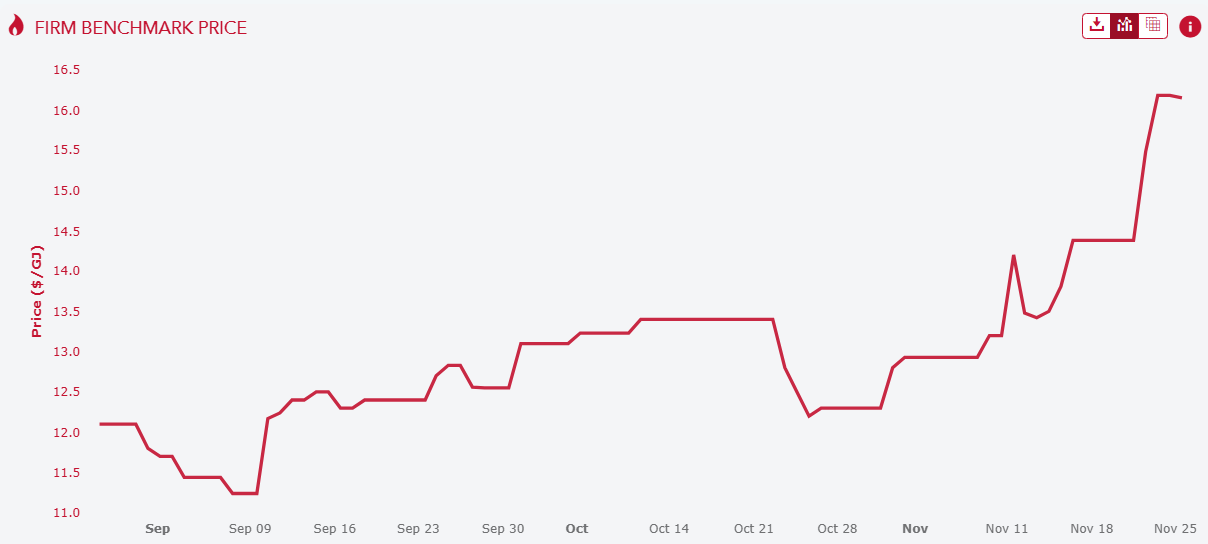The EIA is worried, which means Australia should be terrified.
One or more regions in the Northern Hemisphere may experience colder winter temperatures this year, as weather models point to a possible shift from El Niño to La Niña. Weather models indicate the likelihood of the formation of La Niña, which is generally associated with colder, drier weather in much of the Northern Hemisphere during the winter. The European Centre for Medium-Range Weather Forecasts predicts a colder winter in Northwest and Central Europe. The last two winters were exceptionally warm, contributing to relatively low natural gas consumption in Europe, higher end-of-season storage inventories, and lower natural gas prices.
…Should the weather turn out colder than the previous two winters in Europe, and should Asia also experience a colder winter, the global supply-demand balances will tighten given the limited incremental LNG supply coming online.

It is already underway.

This is the excuse that the East Coast gas cartel needs to rocket local prices 400% above historical averages.

Which is driving a new electricity price shock in our off-peak season. Prices have bottomed roughly 30% above last year.

Futures are increasingly pricing the same.

All of these are inputs into the AER decision for retail electricity benchmarks next March for 2025/26.
Another material bill shock is being baked in now by the East Coast gas cartel while the energy superidiot refuses to talk about it.
Domestic reservation or export levies now!

